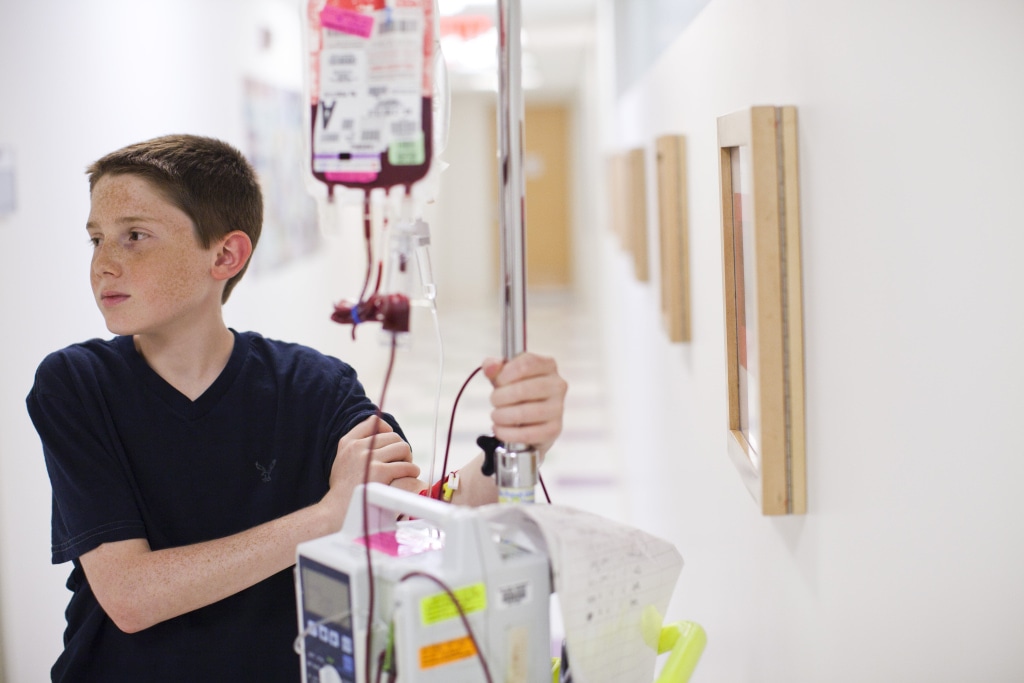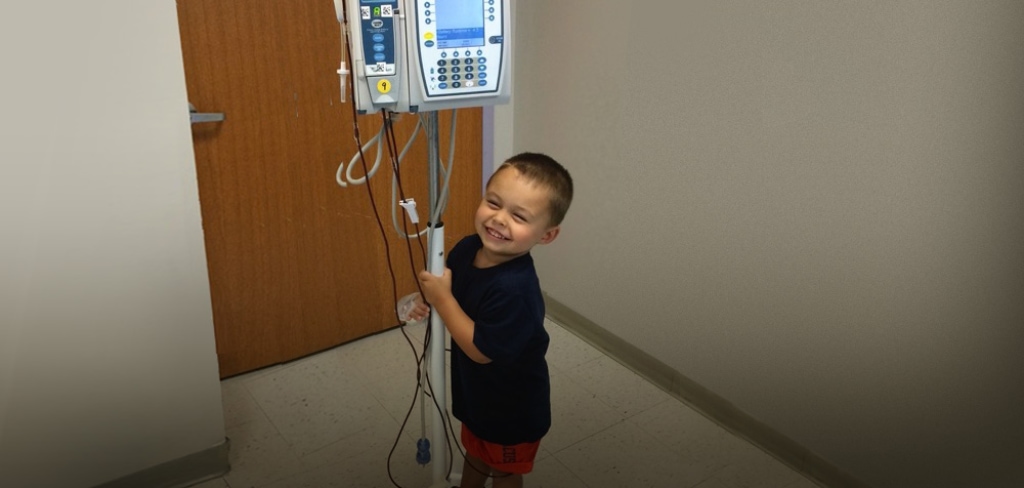What is Thalassemia?
Understanding the Blood Disorder
Thalassemia is the name of a group of genetic blood disorders. To understand how Thalassemia affects the human body, you must first understand a little about how blood is made.
Hemoglobin is the oxygen-carrying component of the red blood cells. It consists of two different proteins, an alpha and a beta. If the body doesn’t produce enough of either of these two proteins, the red blood cells do not form properly and cannot carry sufficient oxygen. The result is anemia that begins in early childhood and lasts throughout life.
Since Thalassemia is not a single disorder but a group of related disorders that affect the human body in similar ways, it is important to understand the differences between the various types of the disorder.
People who have Thalassemia trait (also called Thalassemia Minor) carry the genetic trait for Thalassemia. They do not usually experience any health problems, except perhaps a mild anemia.
A person may have either Alpha Thalassemia trait or Beta Thalassemia trait. This is depending upon which form of beta protein is lacking. Click here to learn more about having the Alpha trait and here to learn more about having the Beta trait.
If you have the trait, your physician may prescribe iron supplements because your red blood cells are smaller than typical. Unless you also have iron deficiency in addition to Thalassemia, this is not needed and should be avoided.
Occasionally, a person with Thalassemia may experience some physical ailments that they believe is related to Thalassemia. In such cases, physicians should look carefully for other causes of these ailments. The reason for this is because there are no significant health-related issues associated with having the trait.
Addressing these issues by “treating” Thalassemia trait prevents the doctor from addressing the actual underlying cause of the issues.
The most important reason for discovering if you carry the trait is this:
If two people who each carry the same form of Thalassemia trait have a child, there is a 25% chance that this child will be born with a severe form of Thalassemia.

Beta Thalassemia
People whose hemoglobin does not produce enough beta protein have Beta Thalassemia. It is found in people of Mediterranean descent, such as Italians and Greeks, and is also found in the Arabian Peninsula, Iran, Africa, Southeast Asia and southern China.
There are three types of Beta Thalassemia that also range from mild to severe in their effect on the body.
Thalassemia Minor or Thalassemia Trait
In this condition, the lack of beta protein is not great enough to cause problems in the normal functioning of the hemoglobin. A person with this condition simply carries the genetic trait for Thalassemia and will usually experience no health problems other than a possible mild anemia. As in mild Alpha Thalassemia, physicians often mistake the small red blood cells of the person with Beta Thalassemia minor as a sign of iron-deficiency anemia and incorrectly prescribe iron supplements.
Beta Thalassemia occurs when hemoglobin lacks enough beta protein, primarily affecting individuals of Mediterranean, Middle Eastern, African, and Southeast Asian descent. It ranges from Thalassemia Minor, which typically causes no symptoms, to Thalassemia Major (Cooley’s Anemia), the most severe form that requires regular blood transfusions and lifelong medical care to manage life-threatening anemia and iron overload.
Thalassemia Intermedia
In this condition the lack of beta protein in the hemoglobin is great enough to cause a moderately severe anemia and significant health problems, including bone deformities and enlargement of the spleen. However, there is a wide range in the clinical severity of this condition, and the borderline between Thalassemia Intermedia and the most severe form, Thalassemia Major, can be confusing. The deciding factor seems to be the amount of blood transfusions required by the patient. The more dependent the patient is on blood transfusions, the more likely he or she is to be classified as Thalassemia Major. Generally speaking, patients with Thalassemia Intermedia need blood transfusions to improve their quality of life, but not in order to survive.
Thalassemia Major or Cooley’s Anemia
This is the most severe form of Beta Thalassemia in which the complete lack of beta protein in the hemoglobin causes a life-threatening anemia that requires regular blood transfusions and extensive ongoing medical care. These extensive, lifelong blood transfusions lead to iron-overload which must be treated with chelation therapy to prevent early death from organ failure.

Alpha Thalassemia
People whose hemoglobin does not produce enough alpha protein have Alpha Thalassemia. It is commonly found in Africa, the Middle East, India, Southeast Asia, southern China, and occasionally the Mediterranean region.
There are four types of Alpha Thalassemia that range from mild to severe in their effect on the body.
Silent Carrier State
This condition generally causes no health problems because the lack of alpha protein is so small that the hemoglobin functions normally. It is called “silent carrier” because of how difficult it is to detect. Silent carrier state is “diagnosed” by deduction when an apparently normal individual has a child with hemoglobin H disease or Alpha Thalassemia trait.
Hemoglobin Constant Spring
This is an unusual form of Silent Carrier state that is caused by a mutation of the alpha globin. It is called Constant Spring after the region of Jamaica in which it was discovered. As in silent carrier state, an individual with this condition usually experiences no related health problems.
Alpha Thalassemia Trait or Mild Alpha Thalassemia
In this condition, the lack of alpha protein is somewhat greater. Patients with this condition have smaller red blood cells and a mild anemia, although many patients do not experience symptoms. However, physicians often mistake mild Alpha Thalassemia for iron deficiency anemia and prescribe iron supplements that have no effect on the anemia.
Alpha Thalassemia occurs when the body doesn’t produce enough alpha protein in hemoglobin, commonly affecting people in Africa, Asia, and the Mediterranean. The condition ranges from the mild Silent Carrier State, with no symptoms, to the severe Alpha Thalassemia Major, which can cause life-threatening anemia and requires lifelong treatment.
Hemoglobin H Disease
In this condition, the lack of alpha protein is great enough to cause severe anemia and serious health problems such as an enlarged spleen, bone deformities and fatigue. It is named for the abnormal hemoglobin H (created by the remaining beta globin) that destroys red blood cells.
Hemoglobin H-Constant Spring
This condition is more severe than hemoglobin H disease. Individuals with this condition tend to have a more severe anemia and suffer more frequently from enlargement of the spleen and viral infections.
Homozygous Constant Spring
This condition is a variation of hemoglobin H-Constant Spring that occurs when two Constant Spring carriers pass their genes on to their child (as opposed to hemoglobin H Constant Spring, in which one parent is a Constant Spring Carrier and the other a carrier of Alpha Thalassemia trait). This condition is generally less severe than hemoglobin H Constant Spring and more similar to hemoglobin H disease.
Alpha Thalassemia Major (Hemoglobin Bart’s Hydrops Fetalis)
In this condition, there are no alpha genes in the individual’s DNA, which causes the gamma globins produced by the fetus to form an abnormal hemoglobin called Hemoglobin Barts. While Alpha Thalassemia Major is an extremely serious condition, treatment and survival is possible with in utero blood transfusions. Individuals born with Alpha Thalassemia Major are treated with lifelong blood transfusions and other medical care. (UCSF Benioff Children’s Hospital has created two brochures on Alpha Thalassemia Major and treatment options, including a new clinical trial exploring in utero stem cell transplantation.

Other Forms of Thalassemia
In addition to the Alpha and Beta Thalassemias, there are other related disorders that occur when the gene for alpha or Beta Thalassemia combines with an abnormal or mutant gene.
E Beta Thalassemia
Hemoglobin E is one of the most common abnormal hemoglobins. It is usually found in people of Southeast Asian ancestry, such as Cambodians, Vietnamese and Thai. When combined with Beta Thalassemia, hemoglobin E produces E Beta Thalassemia, a moderately severe anemia which is similar in symptoms to Beta Thalassemia Intermedia.
Sickle Beta Thalassemia
This condition is caused by a combination of Beta Thalassemia and hemoglobin S, the abnormal hemoglobin found in people with sickle cell disease. It is commonly found in people of Mediterranean ancestry, such as Italians, Greeks and Turks. The condition varies according to the amount of normal beta globin produced by the beta gene. When no beta globin is produced by the beta gene, the condition is almost identical with sickle cell disease. The more beta globin produced by the beta gene, the less severe the condition.
